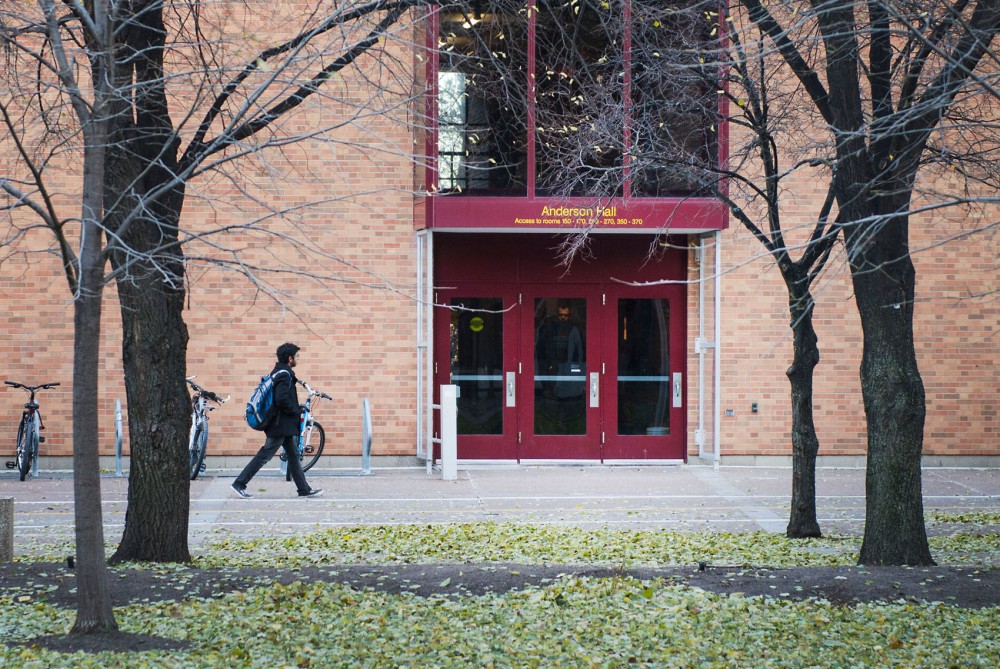The University of Minnesota’s bias response team stands out for its free speech and academic protections, a survey of over 200 similar teams across the country found.
The report, published this month by the nonpartisan, nonprofit group Foundation for Individual Rights in Education, compared schools based on who reviews reports, what constitutes bias and whether the team agrees tension exists between bias reports and free speech.
The University’s Bias Response and Referral Network fared better than many schools surveyed.
BRRN members say this is a result of concerted efforts to foster open conversation on campus during its formation last year. For the first nine months following its January 2016 launch, BRRN received about 25 reports.
The University did not immediately respond to a request for more recent data.
FIRE conducted the survey with the stance that tension between protecting free speech and addressing bias is unavoidable. About half of the 232 teams surveyed mention free speech on their websites or in their policies, the report found.
The University’s BRRN page states the team is “committed to safeguarding the free expression rights of all University members” and considers whether an incident has implications for free speech or academic freedom when a report is made.
Additionally, the study’s lead author, Adam Steinbaugh, said the University’s definition of what constitutes a “bias incident” is one of the best he’s seen.
Acts motivated by 14 specific characteristics, like race, disability and sexual orientation, are included in the University’s definition. Definitions of bias at other schools, like the University of North Carolina-Charlotte and Dartmouth College, encompass political and social views, which could invite administrative and police surveillance of political activity, the report says.
Including strong free speech protections in the team’s procedures was an easy decision, said Tina Marisam, University Title IX coordinator, Office for Equal Opportunity and Affirmative Action director and BRRN member. She said the most effective response to a bias incident is often open conversation about its harmful effects.
“Working to end bias, in our view, requires free speech and creating more opportunities for free speech,” Marisam said.
The best bias response teams, Steinbaugh said, are clear about their limitations in order to avoid a chilling effect on free speech. In addition, they are not responsible for investigating reports or punishing students.
“If they’re just trying to gather information about what’s going on on campus, that doesn’t have as … much of a threat to freedom of speech as investigating people [does],” he said.
To avoid such a chilling effect, the University’s BRRN doesn’t have any investigatory or disciplinary role, said BRRN member Karen Miksch. The team instead tracks local and national trends in bias reports and serves as a referral network to direct reporters to the appropriate resources, she said.
Forty-two percent of schools surveyed include law enforcement on their response teams, the survey said.
While police should investigate bias cases involving criminal conduct, it otherwise could lead to regulation of political activity and other speech, Steinbaugh said.
The University’s group is among those that don’t include law enforcement.
If members suspect an incident might require a police response, they forward the report to the University of Minnesota Police Department, according to the BRRN webpage.
In order to protect academic freedom, teams should include faculty, Steinbaugh said. The survey found that only 27 percent of teams do.
“[If] they don’t have faculty members on the team, that makes it less likely that the team is going to be able to say, ‘Hey, this is an issue of academic freedom,’” Steinbaugh said.
Miksch is one of two faculty members on the University’s BRRN. She was sought out for it because of her research background in academic freedom, she said.
She is also a member of the University Senate’s Academic Freedom and Tenure Committee.
This spring, Miksch will host free speech training for BRRN members. Only one school out of those surveyed — Louisiana State University — trains its members in First Amendment concerns.
At the training, BRRN members will consider potential bias scenarios and discuss how to foster open dialogue on campus, Miksch said.
“The University is a place where people can have these kinds of debates and conversations but doesn’t put up with what would be illegal or criminal,” she said.








